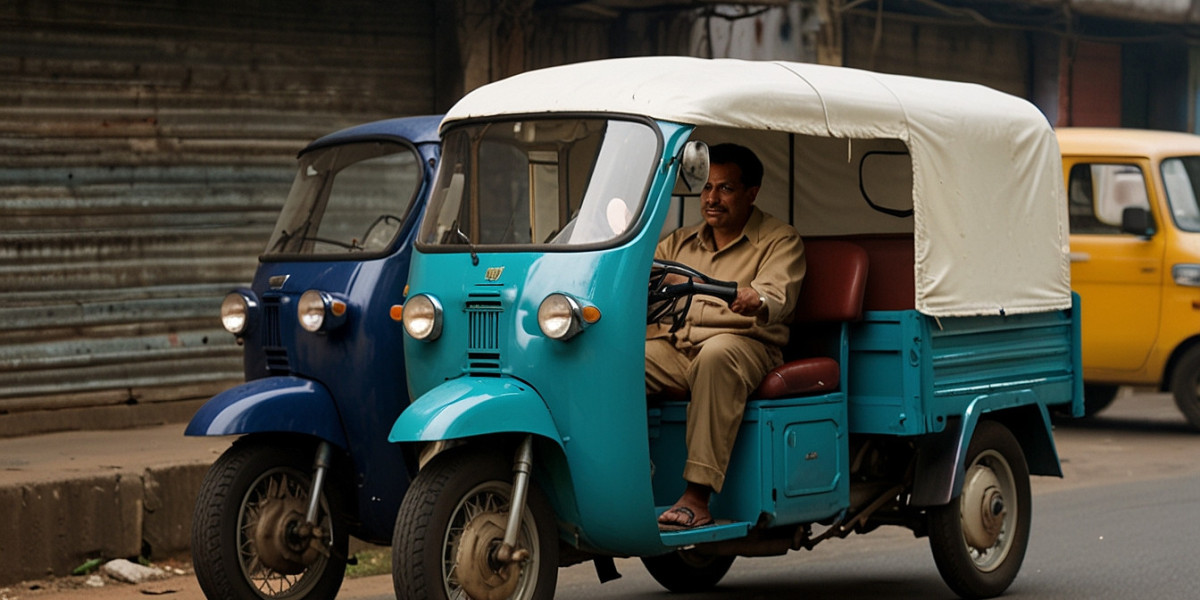The India three-wheeler market is witnessing a robust transformation, driven by rapid urbanization, the need for cost-effective transportation, and the government’s aggressive push for electrification. Valued at USD 3.99 Billion in 2024, the market is poised to reach USD 6.72 Billion by 2030, registering a steady CAGR of 9.16% during the forecast period. This trajectory reflects the growing adoption of both passenger and load-carrying three-wheelers, increasingly powered by electric propulsion systems. Traditional ICE vehicles still hold a significant market share, but their dominance is fading in favor of eco-friendly electric alternatives.
Three-wheelers have long been the backbone of short-distance urban and rural mobility in India. Their compact size, maneuverability, and affordability make them ideal for densely populated areas, especially in cities and tier 2 & 3 towns. The rising adoption of electric three-wheelers is a significant turning point in India’s transition to sustainable transportation.
Download Free Sample Report: https://www.techsciresearch.com/sample-report.aspx?cid=3038
Emerging Market Drivers
1. Urbanization and Last-Mile Connectivity
The migration of people from rural to urban areas has intensified the demand for affordable urban transportation. Three-wheelers serve as a critical link for last-mile connectivity, filling gaps where buses and metros do not reach. Their low operating costs and nimble maneuvering make them a preferred choice for daily commuters and logistics providers alike.
2. Government Incentives and Electrification Policies
India’s government is actively supporting the electric mobility revolution through programs such as the FAME (Faster Adoption and Manufacturing of Hybrid and Electric Vehicles) scheme. Subsidies, reduced GST, registration benefits, and low-interest loans are encouraging both buyers and manufacturers to adopt EVs. As a result, electric three-wheelers are becoming more affordable and accessible.
3. E-Commerce and Delivery Demand
The explosive growth of the e-commerce sector is another powerful driver. Companies require reliable, cost-effective, and environmentally sustainable delivery vehicles, and electric cargo three-wheelers are rising to the occasion. Their ability to navigate congested city streets while maintaining low operational costs makes them ideal for parcel and food deliveries.
4. Technological Innovation
Advances in battery technology, vehicle lightweighting, and connectivity solutions are enhancing the performance and appeal of three-wheelers. Vehicles are now equipped with features like GPS tracking, mobile connectivity, and digital payment integration, which increase their efficiency and appeal to fleet operators and ride-hailing platforms.
Emerging Trends
1. Rising Adoption of Electric Rickshaws (E-Rickshaws)
Electric rickshaws are becoming mainstream due to their lower maintenance costs, zero emissions, and ease of charging. They are especially popular in tier 2 and tier 3 cities and play a vital role in providing sustainable livelihoods to thousands of drivers.
2. Shift Towards Smart, Connected Vehicles
The industry is witnessing a gradual shift towards smart vehicles integrated with IoT solutions. These connected vehicles offer real-time data analytics, fleet tracking, and preventive maintenance alerts, improving fleet utilization and reducing downtime.
3. Battery Swapping Technology
Battery-swapping infrastructure is gaining traction as a solution to the long charging time of electric vehicles. This is particularly useful for commercial operators who cannot afford downtime. Swapping stations allow for fast battery exchange, ensuring round-the-clock operations.
4. Material Innovation and Lightweight Designs
To improve energy efficiency and range, manufacturers are experimenting with lightweight yet strong materials like high-strength steel and aluminum. These materials reduce vehicle weight without compromising safety and performance.
5. Digital Financing and Ownership Models
Digital finance platforms are enabling easier access to loans for buyers in semi-urban and rural areas. Subscription and lease models are also making ownership more flexible, especially for commercial operators who are testing electric three-wheelers.
Competitive Analysis
India’s three-wheeler market is intensely competitive, with a mix of established players and emerging startups. Major manufacturers are continuously investing in R&D to upgrade their product offerings and tap into the growing EV demand.
Bajaj Auto Limited remains the market leader, known for its wide product range, durable vehicles, and strong dealership network.
Piaggio Vehicles Pvt. Ltd. is another significant player, offering both ICE and electric models with a focus on cargo solutions.
Atul Auto Limited and Mahindra & Mahindra Limited are diversifying their product portfolios to include electric variants that meet evolving regulatory standards and customer preferences.
TVS Motor Company and Scooters India Limited continue to innovate in urban mobility solutions.
Startups like Kinetic Green Energy & Power Solutions Ltd., Speego Vehicles, and Zuperia Auto are also entering the market with niche electric models, challenging traditional players with cost-effective and tech-enabled alternatives.
Regional Insights: Spotlight on South India
South India is emerging as the fastest-growing regional segment in the three-wheeler market. Cities such as Chennai, Bangalore, and Hyderabad are experiencing rapid urban development, increasing the need for flexible, short-range transportation. Government support in the form of state subsidies and incentives for electric vehicle adoption is catalyzing regional growth.
Moreover, South India is becoming a manufacturing hub, ensuring a smooth supply of vehicles. The combination of growing e-commerce activity, improved road infrastructure, and a strong focus on environmental sustainability positions South India as a key contributor to the future of the three-wheeler market.
Market Segmentation Overview
By Vehicle Type:
Passenger Carrier
Load Carrier
By Propulsion Type:
Internal Combustion Engine (ICE)
Electric
By Fuel Type:
Petrol
Diesel
CNG
Electric
By Region:
North India
South India
East India
West India
Future Outlook
Looking ahead, the India three-wheeler market is expected to maintain its growth momentum through 2030. Several factors contribute to this optimistic forecast:
Policy Support: Ongoing and new government schemes are expected to accelerate electric vehicle adoption across the country.
Technological Evolution: Advancements in battery technology and integration of smart features will enhance vehicle utility and user experience.
Private Sector Investment: Both domestic and international companies are showing increasing interest in India’s EV landscape, promising more innovations and competitive pricing.
Sustainable Urbanization: As cities become smarter, the need for low-emission, space-efficient transportation like electric three-wheelers will only grow.
By 2030, India is expected to witness a significant transition where electric three-wheelers will likely dominate new sales, especially in metropolitan and semi-urban areas.
10 Benefits of the Research Report
Comprehensive Market Overview: Offers detailed insights into market structure, segmentation, and forecasts.
Accurate Growth Projections: Includes credible data on market size and expected CAGR till 2030.
Emerging Trend Analysis: Highlights technological and consumer trends shaping the future.
Competitor Intelligence: Covers strategic profiles of leading and emerging market players.
Regulatory Insights: Discusses policy frameworks impacting market dynamics.
Investment Opportunities: Identifies key sectors and geographies with growth potential.
Strategic Recommendations: Provides actionable insights for stakeholders and investors.
Consumer Behavior Analysis: Understands demand patterns across different consumer segments.
Supply Chain Evaluation: Evaluates the logistics, distribution, and vendor landscape.
Customizable Data: Allows for up to 10% report customization to suit specific business needs.
Conclusion
The India three-wheeler market is undergoing a pivotal transformation, driven by sustainability, innovation, and inclusive mobility. While challenges remain in terms of infrastructure and initial costs, the ongoing policy support and market enthusiasm are pushing the sector towards a cleaner and more efficient future. As passenger carriers, cargo vehicles, and electric rickshaws gain momentum, stakeholders must remain agile, collaborative, and forward-thinking to tap into this dynamic growth story.
From regional growth patterns to technological breakthroughs, the India three-wheeler market represents one of the most promising mobility sectors in the nation’s broader transportation ecosystem. Businesses, investors, and policymakers now have a golden opportunity to drive impact and capture long-term value in this high-potential market.
Contact Us:
TechSci Research LLC
420 Lexington Avenue, Suite 300,
New York, United States- 10170
M: +13322586602
Email: sales@techsciresearch.com
Website: www.techsciresearch.com







